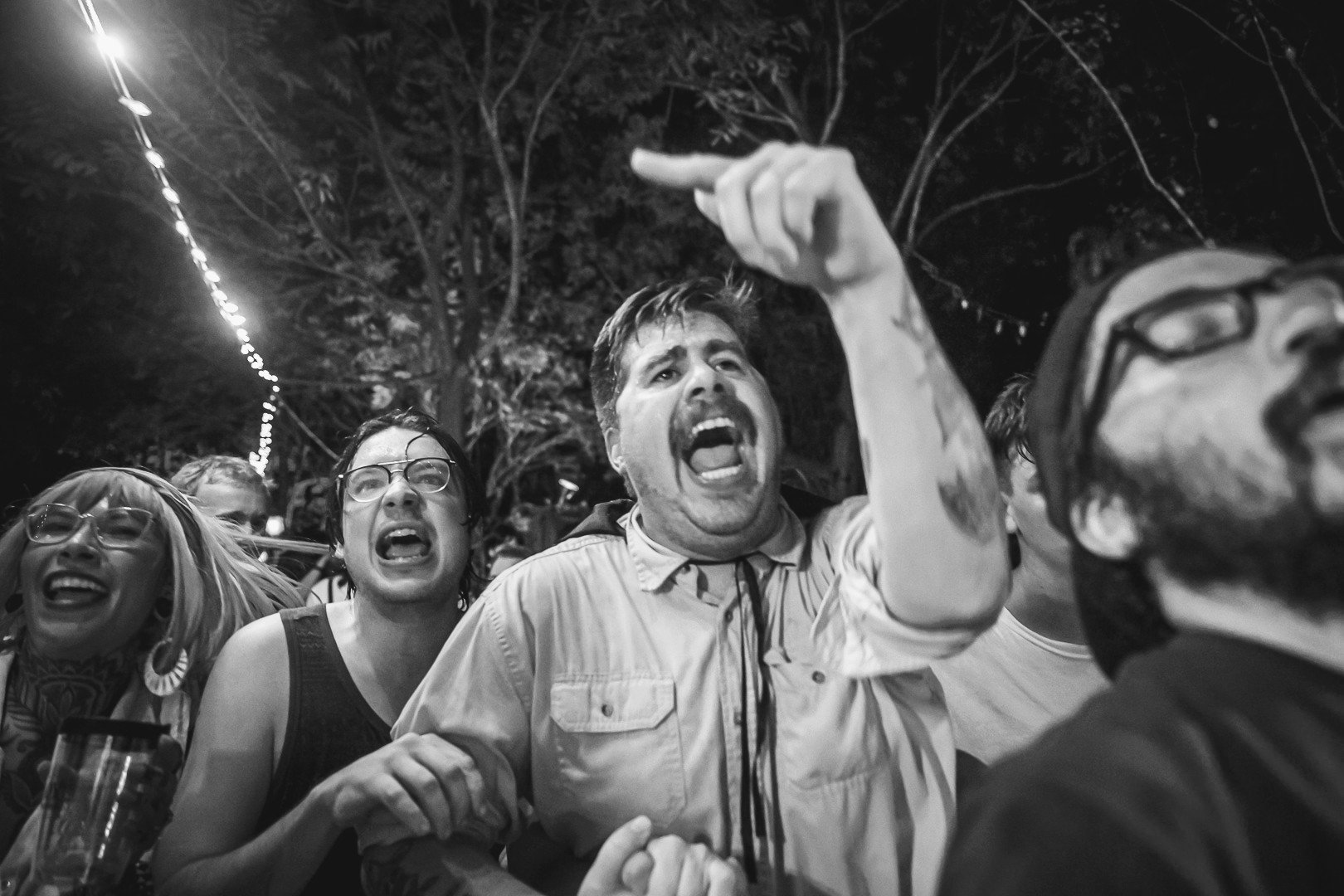The Magic of San Marcos: The Work of Christopher Paul Cardoza
© Christopher Paul Cardoza
Written by Trip Avis
Interviewed by Aundréa Verdi
Photo Edited by Kelly Woodyard
Documentarian Christopher Paul Cardoza has a personal goal: to capture 70,000 portraits. This amount roughly accounts for the entire population of San Marcos, Texas, the place he has called home for the past decade. He has tenderly captured it with his camera lens, watching the cityscape and its denizens change and grow over time. Reflecting on the responsibility that found him, he muses: “Unbeknownst to me then, in taking pictures of certain people and places that are no longer here, I fell into chronicling the day-in-the-life of a town.” Ultimately, though, the work is for his own personal record; an unblemished love of the craft eclipses the promise of a dollar amount. The city has equally claimed him: Cardoza has become a ubiquitous fixture in San Marcos’ social milieu through his passionate documentation of local culture. His distinctive appearance and omnipresence on the music scene led to a local tattoo artist featuring Cardoza’s likeness in their flash sheets.
Cardoza’s passion for capturing the potent energy of a musical gathering is as old as his photography practice. In his youth, he was drawn to iconic images of rock stars and sought to capture the exact ephemeral moment of exuberance and release shared by both musician and audience. Armed with an Olympus OM-10 film camera cajoled from his father for Christmas, a teenaged Cardoza began his photographic journey covering local sporting events, tasked by a photojournalist in his native California. Following a foray into the filmmaking industry, which led to a fourteen-year lacuna from his photography, he found his way back to his first artistic love at a low point: “I picked up a point-and-shoot [...] it helped me get out of my head.”
© Christopher Paul Cardoza
After relocating to Texas for a job opportunity, Cardoza questioned the state of his future and career path. To soothe his doubting mind, he bought himself a camera. It was then only a matter of time before things ignited—to use his word—though he still did not think he would do it for a living. In his adoptive home state, he fell in with a group of homeless artists, admiring their “weird spirit” of “Fuck all, we’re going to keep forging ahead.” He adopted this bootstrapping mentality: “The car is broken down, but we’re still gonna perform live tonight.” Equipped with this musical analogy, Cardoza began hanging around local music clubs, tapping into that entrancing vibe that had first captured his attention in his youth. He was returning to his roots. After taking a chance by asking a musician if he could shoot some photos, he began a regular on the local scene, documenting the live music that occurred nightly. In his words, he stuck around long enough—“half-ass fell into it”—and people started paying him. Not knowing what else to do with his growing collection of digital images, he took to the modern convenience of social media to share his art with the community and the world at large.
© Christopher Paul Cardoza
Cardoza has a business model different from that of many full-time photographers. While many label themselves event photographers and are motivated by the promise of payment, he is more apt to just show up for the experience. While he dabbles in studio work and event photography, Cardoza considers himself first and foremost a photojournalist, or, to use his preferred term, a documentarian. He is drawn to this role as he seeks to capture the world around him, happening in real-time, the fleeting moment. There are only so many ways to photograph a band when shooting live music. Cardoza’s work moves beyond that — he wants to capture the feel of the event, the mise-en-scene, the frenetic energy imbued by that fleeting yet timeless present moment. He hopes to translate this energy to his viewers. While many photographers try to convey a photograph's ‘story,’ or narrative element, Cardoza sees the story occurring in every corner of the room. He has been pursuing film photography on the side of his digital work, which has made him “step backward.” His use of 35mm film has relaxed his outlook on perfection, allowing him to slow down in many ways and savor the craft more fully.
If one wishes to see San Marcos's magic, Cardoza simply says, “Look at the pictures.” Often cast in the shadow of the nearby cultural hub of Austin, San Marcos has an intrigue and strong creative energy that cannot be denied. It is felt deeply and collaboratively by its residents and rubs off on visitors. Cardoza pridefully acknowledges that something is going on every day of the week. Part of what makes San Marcos special lies in its small-town energy: it possesses a tight-knit community where everyone supports each other and pushes each other to be creative. Cardoza opines that while he may not be able to fully see it “because he is right in the middle of it,” some viewers of his work believe he has captured San Marcos in a transition period, coming out of its “grand old age” and swallowed by the collegiate fervor of a college town. Regardless, he will be there to dutifully, tenderly document it — come hell or high water.
© Christopher Paul Cardoza











